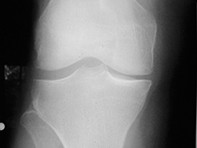Peer Reviewed
Rheumatology clinic
Intra-articular hyluronic acid for osteoarthritis of the knee
Abstract
Hyaluronic acid can be a useful therapy for patients with mild to moderate knee osteoarthritis, although its efficacy and mechanism of action are debated. Dr Bagga and Associate Professor March present a guide to current use.
Key Points
What is hyaluronic acid?
Hyaluronic acid is a large polysaccharide consisting of D-glucuronic acid and N-acetyl-D-glucosamine residues in an alternating sequence. It is present in high concentrations throughout many tissues but is most abundant in synovial fluid.
Hyaluronic acid is synthesised by specialised synoviocytes in the joints. In healthy adult synovial fluid, it has a concentration in the range of 2.5 to 4 mg/mL and a molecular weight of around 4 to 10 million. At this concentration the molecules overlap extensively and form a highly coiled, tangled network that gives the fluid its elasticity and viscosity. These rheological properties are believed to be important in protecting the cartilage from strong compressive and shear forces.
Purchase the PDF version of this article
Already a subscriber? Login here.

